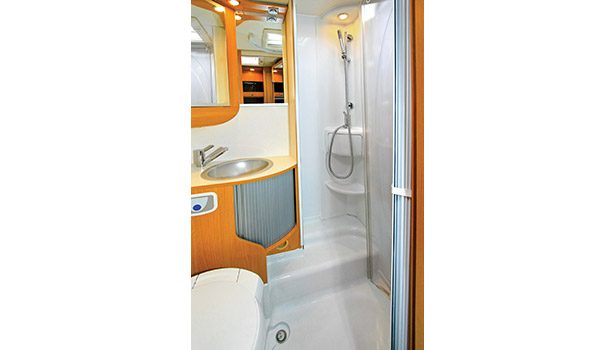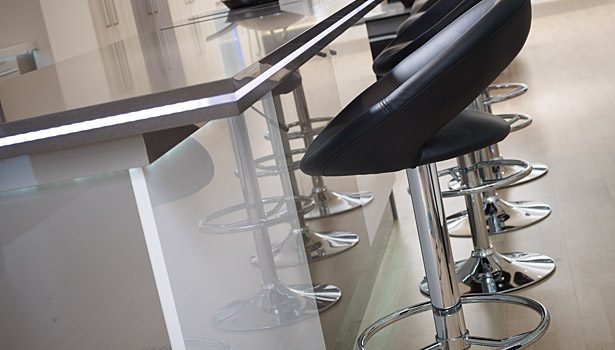Polyurethane Laminating Adhesives for Hard-to-Bond Substrates
Today's updated chemistry and processing know-how can make a surprising range of substrate combinations feasible.




The current laminating industry mindset is to simply try anything. Many manufacturers have started to realize that creative combinations of unexpected substrates might fill untapped demand for finished products that look and feel novel, are extra sturdy, or display other desirable properties that are unattainable with standard materials.
This continuous push to bond new, strange and challenging substrates is driving the evolution of laminating adhesives. Traditionally, hot-melt polyurethane adhesives have offered numerous processing and performance advantages when bonding challenging substrates. Today, updated chemistry and deep processing know-how can make a surprising range of substrate combinations feasible.
End-use applications for these adhesives range from the mundane to the exotic—from automotive seat cushions to wetsuits—both of which entail bonding fabric to foam. But many other substrates can be combined to make products that are inexpensive, lightweight, insulating or visually intriguing. Plastics, aluminum, styrofoam and the like may be bonded to create anything from RV insulation to foam core signs, walk-in convenience store coolers or fiberglass-coated bathroom wallboard. Aluminum honeycomb can be sandwiched between sheets of aluminum to produce strong but lightweight high-pressure laminate for sides of train cars. In short, any imaginable combination of hard-to-bond layers might be considered for the production of unique, differentiating solutions with the benefits PUR adhesives deliver: cost efficiencies through fast and easy processing and curing, durability, resistance to moisture and temperature extremes, impact resistance, and flexibility.
What Makes a Material Hard to Bond?
Anyone who’s ever used glue knows that some things tend to stick and others don’t. For example, almost any glue will bond paper but will peel off of glass. This is because paper is more wettable than glass; a liquid applied to paper is more likely to spread out, while one applied to glass is more likely to coalesce into droplets.
This discrepancy can be measured by a substrate’s surface energy, or dyne level. The lower the dyne level, the more likely a liquid (such as an adhesive) will bead up on the substrate’s surface, and the more difficult that substrate will be to bond. Materials with dyne levels of 38 or higher are considered reasonably bondable; materials with dyne levels of 30 are not.
A substrate may also be hard to bond for other reasons. For example, items with irregular contours may be hard to coat with adhesive; others might not be clean enough to adhere well. In other cases, the adhesive might be the wrong viscosity for the laminating machinery at hand, causing the equipment to malfunction. The challenge in adhesives R&D is finding a way to make even the lower dyne materials adhere, and to produce adhesives with a range of properties (e.g., viscosity and sprayability) to fulfill manufacturers’ various processing and equipment requirements.
Surface Preparation vs. Improved Adhesives
One way to make low-dyne substrates adhere better is to mechanically alter their surfaces. Newer corona laminating equipment’s high voltage electrodes form plasma, which is then applied to alter a substrate’s surface properties during the production process. Another option is to heat the surface to make it wet better.
Obviously, adhesive chemistry is also critical for laminators dealing with difficult materials. Some adhesive suppliers offer formulas specifically engineered for substrates with very low dyne levels, such as around 30. Special additives are available in some cases to improve adhesive performance.
However, experience demonstrates that surface treatments and specialty formulations (or even a combination of the two) rarely provide the total solution. The key is to take a holistic approach to the bonding challenge. Polyurethane adhesive suppliers that are most likely to help manufacturers succeed in bonding the toughest substrates will be those that offer a 360-degree approach to the task at hand.
When called to help engineer or troubleshoot a customer’s laminating process, these suppliers’ representatives will examine the system from a number of angles. First, they will examine the materials to be bonded—both substrate and laminate. Often, these materials will be taken to a lab for dyne level assessment and test bonding using various adhesive formulations. Understanding and experimenting with the materials helps determine which adhesive will work best, and whether any kind of pretreatment is advisable.
Next, the equipment must be considered. In the case of new equipment, a visit to the manufacturer or equipment supplier for trial runs with the chosen adhesive can help determine the best setup for the job. An adhesives expert who has ongoing relationships with both laminating equipment suppliers and adhesive delivery equipment suppliers will have easier access for this type of testing.
If equipment already exists, experimenting with the lab-selected adhesive and material samples in the field is necessary to verify that the given equipment can work for the job at hand, as well as whether any modifications are necessary. Sometimes the adhesive selected may not have exactly the right properties to be compatible with the customer’s equipment. When that happens, a good adhesive supplier will be able to produce samples of a custom-adjusted adhesive formulation. If a process is already in place, problem solving may just be a matter of tweaking equipment settings. To save everyone time and get the process back on track as quickly as possible, telephone access to the adhesive supplier is invaluable.
The Devil Is in the Details
Every laminating scenario is unique. Sometimes it takes a concerted effort from everyone—suppliers of the equipment, adhesive and substrate—to find the best laminating solutions. Knowing exactly what is in a formulation can help as well. For example, in one case, a process for binding PVC vinyl to a powder-coated metal was failing. The manufacturer indicated that the powder coating resin contained silicone to make it shiny. This was an important piece of information because silicone is very hard to stick. What’s more, the metal wasn’t even going to show in the final product, so its shininess was irrelevant. Once the powder coater removed the silicone from the formulation, the bonding process worked perfectly.
Another example of a challenging combination requiring close attention to detail is bonding foam to foam. Things to consider include how open and strong the foams are, and how strongly bonded they need to be. This information helps determine whether simply causing the peaks to adhere will suffice or if the adhesion must occur deeper in the foam. Finally, all of these considerations factor into what type of adhesive and equipment should be chosen, and what the settings on that equipment should be.
Multiple Options
Hot-melt polyurethane laminating can be used to bond an astonishing variety of materials to create any type of laminated end product imaginable. PUR adhesives offer many advantages, such as speedy and streamlined processing and curing, moisture resistance, and heat and cold resistance. Top adhesive suppliers engage in R&D to engineer adhesives for hard-to-bond materials with dyne levels around 30. They also offer customizable formulations with variable properties to perform with a range of manufacturing equipment.
Numerous factors go into whether or not a bonding process will work. Choosing an adhesive manufacturer with high-performance products, as well as experienced and highly accessible field technicians, is the best way to get a tough bonding process up and running quickly.
For more information, contact the author at (219) 629-5644 or cthomas@daubert.com, or visit www.daubertchemical.com.
Looking for a reprint of this article?
From high-res PDFs to custom plaques, order your copy today!







